IS IT IRAN'S MIDDLE EAST NOW?
by Jonathan Spyer
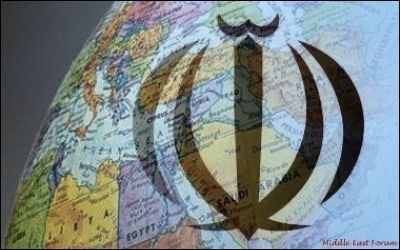
While Iran leads the best organised and most aggressive alliance in the Middle East, the built-in limitations of its methods and the sectarian nature of the conflicts in question will likely stymie Iranian domination of the region.
The Middle East is currently in the midst of widespread instability, civil strife and the collapse or contraction of state authority. Syria, Iraq, Libya, Yemen, Turkey, the West Bank and Gaza Strip, Tunisia and Egypt have all experienced major instability over the last half decade. The first four of these areas have effectively ceased to exist as unitary states, and are now partitioned de facto between warring entities, organised according to ethnic, sectarian or tribal loyalty. The Palestinian territories too are divided into areas controlled by the Islamist Hamas movement in Gaza and the Fatah-dominated Palestinian Authority (PA) in the West Bank.
In this fractious landscape, powerful regional states are seeking to gain advantage, extend their own power, and diminish that of their rivals.
The collapse of states has in turn brought with it the decline of the national identities which supposedly underlay them, and the growth of sectarian identification as a political factor. The result is the emergence of Sunni-Shia conflict as a major overt presence in the Middle East. In Yemen, in Iraq, in Lebanon, and in a more complex way in Syria, Sunni-Shia rivalries form a central dynamic, which are also important in terms of the geo-strategic rivalries among major states competing in the Middle East.
Perhaps the single best organised and most aggressive alliance active currently in the Middle East is the bloc of states and movements gathered around the Islamic Republic of Iran. Motivated by clear strategic goals and by powerful ideological motivations, and with long experience of subversion particularly relevant to the current period of instability in the Middle East, Iran and its allies are powerful players in the regional contest.
Prior to the conclusion of the Joint Comprehensive Plan of Action (JCPOA) on Iran's nuclear programme, signed on 14 July 2015, it had appeared that Iran might be approaching a point of overstretch. Tehran was committed to assist a large portfolio of clients engaged in conflict across the region, at a time when Tehran was itself subject to biting economic sanctions. The continued civil war in Syria and the opening of conflicts in Iraq and Yemen — in which the Iranians were heavily committed — seemed to introduce this possibility.
However, the conclusion of the nuclear agreement — and with it the prospect of release of impounded funds as part of sanctions relief — has immediate implications for the related subject of Iranian regional ambitions and outreach. The precise sum likely to become rapidly available to Iran following the signing of the agreement and sanctions relief remains unclear and disputed. Estimates range from $150 billion (the sum frequently quoted by opponents of the nuclear deal) to $56 billion (the likely sum according to US Treasury Secretary Jacob J. Lew).
But even if one assumes the lower estimate, and combines this with additional sums likely to become available to Iran because of renewed economic ties with the outside world as an element of sanctions relief, it may be concluded that the risk of overstretch, and a consequent inability on the part of Iran to sustain its regional commitments, has effectively disappeared as a result of the signing of the JCPOA.
As a result, Iran is well placed in the current period to continue its practice of supporting proxy political-military organisations in a variety of regional locations, in pursuit of Iranian strategic goals.
IRANIAN AMBITIONS IN THE ARAB WORLD
Iran is currently actively supporting proxies in major conflicts in the following areas: Syria, Iraq, Yemen, Lebanon, and the Palestinian territories. In addition, there is evidence that Iranian agencies are active among Shia populations — as yet without major effect — in Kuwait, Saudi Arabia and Bahrain. Tehran also has a strategic relationship with (Sunni majority) Sudan.
Iranian aims
Iran's strategic goal is to emerge as the dominant power in the Middle East and, eventually, the entire Islamic world. It seeks to roll back US influence in the region and to work towards Israel's destruction.
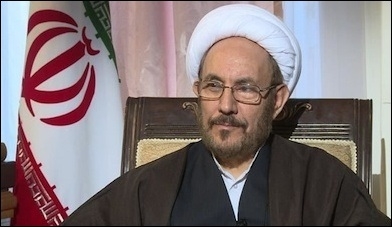
Ali Younesi, a senior adviser to President Hassan Rouhani, sees Iran's role as "protecting the interests of all the people in the region — because they are all Iran's people."
At a conference on 'Iran, Nationalism, History, and Culture' in Tehran in March 2015, Ali Younesi, a senior adviser on intelligence matters to Iranian President Hassan Rouhani, outlined a clear vision for Iranian regional hegemony. Younesi described Iran's role as 'protecting the interests of all the people in the region — because they are all Iran's people ... We must try to once again spread the banner of Islamic-Iranian unity and peace in the region. Iran must bear this responsibility, as it did in the past.' He noted Iran's past as an empire, and spoke of a 'greater Iran' which stretched from the borders of China to the Persian Gulf.
Younesi's statements are not, of course, a failsafe guide to policy. But the adviser's much noted speech is a fair summary up of the wide ambitions of Iran.
In practice, Iranian resources appear to be directed to realising this vision in two specific areas: firstly, the establishment of a contiguous line of pro-Iranian entities between the Iraq-Iran border and the Mediterranean Sea, and secondly, extending Iranian influence to the Arabic-speaking side of the Persian Gulf, and subverting the interests of Saudi Arabia in this area.
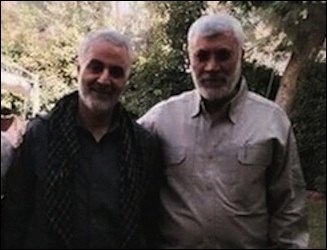
Iraqi militia leader Abu Mahdi al-Muhandis (right) with Iranian Quds Force commander Qasem Soleimani
The former goal has a number of motivating forces behind it. Firstly, there is an obvious strategic interest in reaching access to the Mediterranean, which has been a feature of Iranian and Persian state policy from antiquity.
Secondly, reaching Lebanon gives Tehran an entry point into the Israel-Arab conflict. The Iranians have invested heavily for over 30 years in their client Hezbollah in Lebanon. As non-Arabs and non-Sunni Muslims, the Iranians suffer from a 'legitimacy gap' in the mainly Sunni Muslim Arab Middle East. They seek to close this gap through commitment to the destruction of Israel, and in practical terms through the sponsorship of organisations engaged in war against the Jewish state. Access to Israel's borders is essential for this.
In addition, Iran has an interest in a weak or subordinated Iraq. The Iranian regime fought a bloody war against Iraq in the 1980s, which forms a core formative experience for the regime. To avoid any possible recurrence, Iran has an interest in ensuring a non-hostile Iraq through sponsorship of friendly political players in that country.
With regard to the Gulf, Tehran sees Saudi Arabia and the Gulf Cooperation Council as rivals for power. Tehran lacks the conventional ground and air forces for projection of power beyond its borders. It seeks to overcome this disadvantage through the development of its ballistic missile programme, and through its efforts in asymmetric conflict.
While the Iranians may hope eventually to isolate Saudi Arabia and cause the Gulf states to abandon their links with the US and to instead come under Iranian protection, this moment is far away in terms of the current balance of power because of Iran's limited military capacities. At present, therefore, the Iranians aim to frustrate any Gulf or US ability to carry out operations in the Gulf or into Iranian territory through the building of a deterrent capacity.
The Iranian practice of harassing international shipping in the Straits of Hormuz and the investment in small boats, coastal defence and UAVs reflects this goal. Because of their limited conventional capabilities, the effective use of proxy warfare has high importance to the Iranians.
So to sum up, Iran's strategic goal is ultimately to build regional hegemony. In the short term its core goals include maintaining domination of the space between the Iran-Iraq border and the Mediterranean as well as deterring the US and intimidating the Gulf states.
These goals place Iran at loggerheads with those status quo states in the region, most importantly Saudi Arabia. The Saudi-Iranian rivalry, combined with the collapse of a number of regional states and the growing importance of sectarian identity as a marker of political loyalty, are producing a cross-border sectarian struggle, with Iranian clients lined up against clients of Saudi Arabia, Turkey or Qatar.
This sectarian element is important, because it represents a built-in limit to Iranian potential. As a Shia power, Iran finds it difficult to gain legitimacy among Sunni Arabs or to successfully develop proxies outside of Shia Arab populations, as becomes apparent when taking a closer look at Iran's main commitments in the region.
THE PATTERN OF IRANIAN SUCCESS AND FAILURE
When assessing how things stand for Iran in the main countries in which it is engaged, an emergent pattern presents itself.
Syria
In Syria, Iran has been determined, since the outbreak of the uprising against the Assad dictatorship in March 2011, to preserve the dictator's rule. Iran and Syria have formal relations of military alliance dating back to 1982. Iranian financial assistance, mobilisation of regional proxies, help in military organisation and now direct provision of military personnel to Assad have been vital in preventing his downfall.
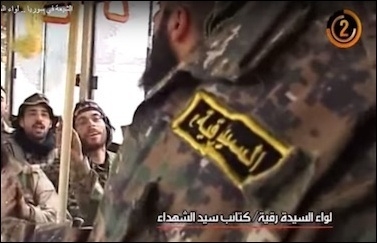
Members of the Iranian-backed Shia militia known as Liwa al-Sayyida Ruqayya in Damascus late last year.
Has the intervention into Syria been a success for Iran and its methods of outreach? Partially. Assad still controls Damascus. But he rules over only about 20 per cent of the entire territory of Syria. There are no prospects of the reconquest of the greater part of the areas lost any time soon. So Iran's efforts may have kept the dictator in his seat, but the result has not been a return to repressive stability, but rather the effective collapse and de facto partition of Syria, with Assad reduced to the status of a single warlord among others, rather than the ruler of a country.
It is noteworthy that despite Iranian assistance, the direction of the Syrian Civil War appeared to be turning decisively against Assad in the course of 2015. The intervention by Russia, beginning this past September derived to a degree from Russian perception that the current levels of support were not working and that if Assad was to be saved, a more direct involvement by Moscow was necessary. According to some reports, the Russian intervention was the direct result of a visit by Iranian Quds Force commander General Qasem Soleimani to Moscow in July 2015 in which he impressed on Russian officials the increasingly desperate predicament faced by Assad. If this was indeed the case, it is testimony to the limited efficacy of Iranian methods in the Syrian context.
Iraq
Iraq has a Shia Arab majority, and a traditionally pro-Iranian party (Dawa) is currently in power. Iranian assistance to the government of Prime Minister Haider al-Abadi in the form of the organising of the Shia militias in the Popular Mobilisation (Hashed al-Shaabi) played a vital role in stopping the Islamic State (IS) advance eastwards in the summer of 2014.
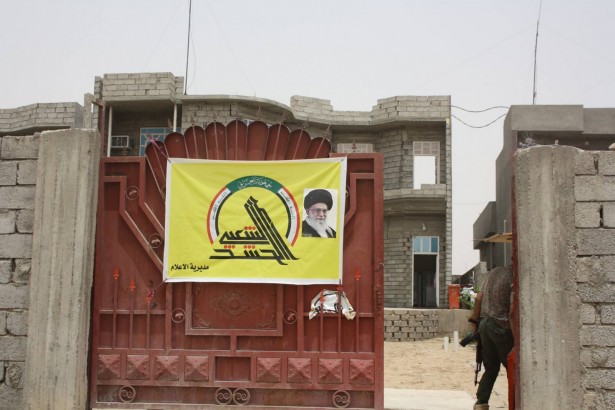
A poster of Iranian Supreme leader Ayatollah Khamenei at the entrance to an office of the Hashd al-Sha'abi (Popular Mobilization) in Baghdad. (Photo: Jonathan Spyer)
The most powerful of the militias are political as well as military organisations. While these militias are officially administered by the Popular Mobilisation Committee, in reality the most powerful of them are directly linked to Iran. The Badr organisation, headed by Hadi al Ameri, and the Ktaeb Hezbollah, led by Abu Mahdi al-Muhandis, are the strongest of these groups. Both Ameri and al-Muhandis are veteran pro-Iranian Shia Islamist activists, with long and verifiable links to the Iranian Revolutionary Guards Corps (the latter fought on the Iranian side in the Iran-Iraq war). Both are personally linked to the Quds Force and Qasem Soleimani.
The Shia militias, as both political and military organisations, are the key instrument for Iran in Iraq. Through them, the Iranians are able to directly impact the policymaking process in the country. Yet it is also the case that Iraq remains effectively divided into three component parts; the government controlled area in the south, the Islamic State territory in the centre, and the Kurdish north. Neither the Shia militias nor the Iraqi armed forces appear anywhere close to re-uniting the country, and it is difficult to see how they could do so, given their openly sectarian, Shia orientation.
So in the Iraqi context, Iranian influence is deep, but the result of it is the fragmentation of Iraq, and the Iranian domination of one part of it, rather than the emergence of a strong Iran-aligned unitary Iraqi state.
Lebanon
In Lebanon, the success of Iranian methods of outreach and subversion are most clearly showcased. Hezbollah is the prototype of an Iranian created and supported political-military group. Established by the Revolutionary Guards in the early 1980s, Hezbollah has, since 1990, been the only non-governmental organisation permitted to maintain an armed wing in Lebanon (with the exception of Palestinian groups permitted to carry arms within refugee camps). In 2006, Hezbollah launched a war on Israel without seeking the consent of the official government of the country. In 2008, it crushed an attempt to impose the authority of the central government over some of its activities.
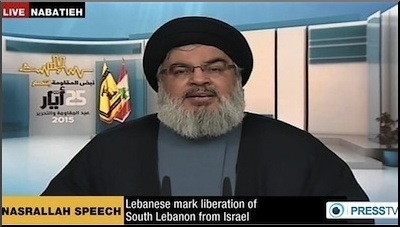
Hezbollah Secretary General Hassan Nasrallah declared in a May 24 speech that his Lebanese Shia movement's fighters will deploy to "all the places in Syria that this battle requires."
Hezbollah has played a vital role in the Syrian civil war as an ally of Iran. Its personnel are taking an active part in the fighting. Iran and Hezbollah have also sought to take advantage of the chaos in Syria to establish an additional front for operations against Israel just east of the Quneitra Crossing (facing the Golan Heights). So far this has not been successful. Israeli pre-emptive action to prevent this has included the killing of a number of senior Iranian Revolutionary Guards Corps and Hezbollah personnel on 19 January 2015.
No challenge to Hezbollah's military power is on the horizon, though the entry of approximately one million Syrian Sunni refugees since 2011 has undermined the notion of an emergent Shia demographic majority which underlay and deepened the organisation's strength. There is evidence of efforts to organise among the Sunnis by both Jabat al-Nusra and IS.
There are no physical restrictions on Hezbollah's freedom of action. But at the same time, the notion of emergent open Hezbollah rule replacing the Lebanese state, and implementing the Iranian system of government in the country is far-fetched. Hezbollah has neither the need nor the possibility of imposing such rule. Iran has implanted a powerful military machine along the border with Israel, giving itself a direct entry to the Arab-Israeli conflict, and the ability to intervene to help other allies in need (Hezbollah has also involved in supporting pro-Iranian groups in Iraq, Yemen and the Palestinian territories in recent years.) But even in Lebanon, the site of Iran's greatest success, if Iran was hoping to produce a similar Shia Islamic regime to its own, this appears neither imminent nor likely.
Yemen
In Yemen, the Iranian ally/client is the Ansar Allah organisation, more commonly known as the Houthis, after the name of the tribe which controls the organisation. The Houthis seized control of the Yemeni capital, Sana'a, in September 2014. The government of President Abd-al Rabbo Mansour Hadi was forced into exile in Saudi Arabia. The Houthis and their allies then began a march to the south, intending to seize the Gulf of Aden and unite the country under their control.
Saudi and Emirati assistance to Yemeni government forces seeking to prevent this outcome began on 26 March. Egypt, Morocco, Jordan, Sudan, Kuwait, Qatar and Bahrain also joined the coalition against the Houthis. The Houthis, having failed to take Aden City, have now agreed to adhere to a seven point plan brokered by the UN at talks in Muscat, Oman. The plan includes a ceasefire and the return of the government to Sana'a. It is not yet clear if the planned ceasefire will be implemented. But again, we see the pattern of Iranian support resulting in division and renewed conflict, rather than outright victory for the Iranians.
Palestinians
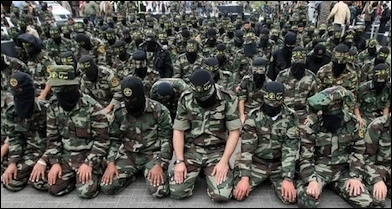
Iranian-backed Islamic Jihad militants in training
Iran maintains a strategic alliance of long standing with one Palestinian organisation — Palestinian Islamic Jihad (PIJ). Islamic Jihad was founded in the Gaza Strip in 1981 by activists directly influenced by the Islamic Revolution in Iran. PIJ has remained a supporter of Iran and beneficiary of Iranian aid and support ever since. Islamic Jihad, however, is a small organisation, with no serious ambitions for competing for the political leadership of the Palestinians. In the course of the 1990s, Iran sought to establish a strategic relationship with Hamas, largest and most powerful of Palestinian Islamist groups. This burgeoning relationship was disrupted, however, by the post-Arab Spring rise of the Muslim Brotherhood in Egypt and then by the outbreak of civil war in Syria. Hamas, a Muslim Brotherhood linked group, sought to distance itself from the Iran-aligned Syrian regime, which was engaged in crushing a largely Sunni Arab revolt. The movement transferred its headquarters from Damascus. At the same time, Hamas sought to draw closer to what looked then to be an emergent Muslim Brotherhood regional bloc, centred on Egypt and Qatar.
In the event, no such bloc emerged. But it led to estrangement between Hamas and Iran. As of today, a split pertains in Hamas regarding future relations with Iran, with some elements supporting a return to alignment with the Iranians and others favouring alignment with Qatar and an attempt to repair relations with Saudi Arabia.
During the period of the Second Intifada, the Iranians also maintained contacts with and support for armed elements within the rival Fatah movement. It is likely that these channels of communication and support still exist.
In all areas of Iranian regional 'outreach', a common pattern exists. Iranian regional policy is characterised by the establishment and/or sponsorship of proxy political-military organisations. In every case noted, (with the partial exception of Lebanon) the result of the Iranian involvement is not Iranian strategic victory and the constitution of the state in question as an ally of Iran. Rather, Iranian outreach prevents the defeat and eclipse of the local Iranian ally, while ensuring division and continued conflict in the area in question.
This Iranian modus operandi — and its centrality in Iranian regional strategy — as well as the far reaching nature of Iranian goals as outlined above, mean the notion that a post JCPOA Iran can form a partner for stability in the region is deeply flawed, and will quickly be contradicted by the facts.
The export of chaos has the merit, perhaps, of keeping disorder far from Iran's own borders by ensuring that rivals to Tehran are kept busy engaged in proxy conflicts elsewhere. However, it is difficult to see how it can result in regional hegemony and leadership.
This Iranian penchant for fomenting chaos also places them on a different trajectory to the Russians. This is important, because the Russian intervention in the Syrian Civil War, from September 2015 has been characterised in some quarters as the birth of a new strategic alliance between Tehran and Moscow. Ibrahim Amin, editor of the pro-Hezbollah al-Akhbar newspaper, happily called this supposed new bloc the '4 + 1' alliance (Iran, Iraq, Syria, Russia and Hezbollah).
But Russia has no interest in strategic support for Islamist proxies in the Middle East. Rather, it seeks powerful state allies, without particular concern as to their internal electoral arrangements or ideological proclivities. The Iranian model of creation and support of proxy Shia Islamist forces contrasts with Russia's desire for powerful, centralised forces with which it can do business. This means that Russia and Iran have different and even opposed regional orientations, even if there is currently an overlap with regard to the Assad regime in Syria.
As a result of the JCPOA, Iran is likely to increase its support for its portfolio of proxy organisations across the region. The net effect of this will be to increase regional disorder and foment continued conflict. However, because of the built in limitations of Iranian methods and because of the sectarian nature of the conflicts in question (which means Iran finds it very difficult or impossible to pursue really lasting alliances with non-Shia Arab clients), it is unlikely that this will result in the attainment by Iran of its strategic goal of regional leadership/hegemony. Iran is a spoiler par excellence. But despite its ambitions and pretensions, it does not look like the founder of a new Middle Eastern order.
Jonathan Spyer is a Middle East analyst focusing on Syria,
Lebanon and Israeli strategic affairs. He is a senior research
fellow at the Global Research in International Affairs (GLORIA)
Center, Herzliya, a fellow at the Middle East Forum and is the
author of The Transforming Fire: the Rise of the Israel-Islamist
Conflict (Continuum, 2011). Spyer is a columnist at the Jerusalem
Post newspaper and has written for a wide variety of
publications, including the Wall Street Journal, the Guardian,
the Times, The National Post, the Weekly Standard, Haaretz and
many others. He is a frequent guest analyst on electronic media
and has appeared on CNN, Fox News, BBC World, al-Jazeera, Sky
News and other outlets. This article appeared Autumn, 2015 in
Middlee East Forum and is archived at
http://www.meforum.org/5622/iran-middle-east